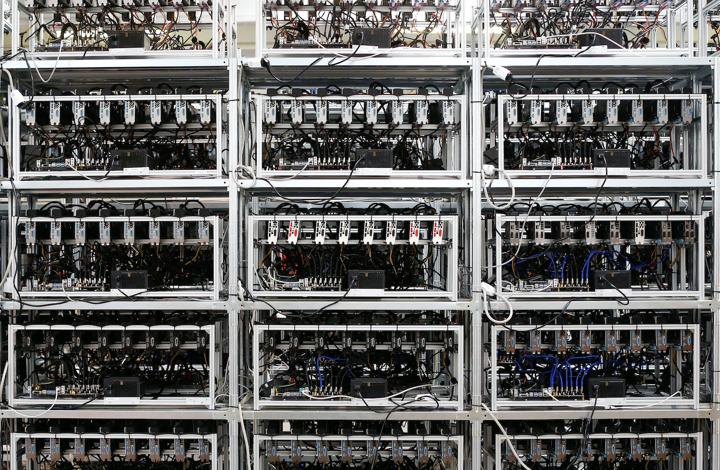(AF) As one of the largest bases of cryptocurrency computing power, the Inner Mongolia Autonomous Region of China is once again suffering a crackdown. The reason many crypto miners are based in the area is cheap electricity prices, often masquerading as ‘data centres’.
But now they are entering a period of “increased supervision of virtual currency mining”. Authorities have even set up a telephone tip line so citizens can report on crypto miners.
Inner Mongolia Autonomous Region became the first province in China to completely ban virtual currency mining. And it can be expected that other areas will follow.
As a province with major coal power generation, in order to achieve the national goal of “dual control” of energy consumption, the Inner Mongolia Development and Reform Commission (IMDRC) issued in March a notice on ways it would ensure targets and tasks laid out in the 14th Five-Year Plan in regard to controlling the use of energy are achieved. These clearly require that virtual currency mining projects be completely cleaned out and shut down.
Indeed, all had to leave before the end of last month. So, ‘mining’ for virtual currency projects is now strictly prohibited.
On Tuesday May 18, the IMDRC announced that it was established reporting platform to accept complaints about companies or individuals ‘mining’ for bitcoin or other virtual currencies and related issues.
The scope of reporting includes: companies ‘mining’ virtual currencies (or other hidden forms of “mining”); virtual currency “mining” companies masquerading as data centres that enjoy preferential policies on taxes, land, and electricity prices; companies that provide services such as site leasing for companies engaged in virtual currency “mining”; companies that obtain electricity through illegal means and engage in virtual currency “mining”.
Science and Innovation Daily tried the ‘dob in a bitcoin miner’ number published in the announcement, and said the person who answered said that officials do not distinguish between hydropower mining or coal power mining. Even if people were using ‘clean energy’ such as hydropower, it was still use of electricity.
The purpose of the announcement was closely related to the goal of “dual control” of energy consumption in Inner Mongolia, and is in line with policies to bring down “carbon peaks” and achieving “carbon neutrality”. In the future, Inner Mongolia’s supervision of virtual currency mining will “be under big pressure.”

A bank of computer servers used for ‘mining’ bitcoin is seen at a site in Florence, Italy. Reuters photo from 2018.
How much energy does ‘mining’ consume?
The energy consumption and emissions of virtual currency mining mainly involve two things – electricity and machines. Due to the huge computer calculations and authentication transactions involved, ‘mining’ requires huge power consumption, plus ‘mining’ machines (servers) and parts also directly and indirectly affect the environment.
According to data from a research index on energy consumption for cryptocurrency mining by the University of Cambridge, as of Wednesday May 19, the annual power consumption of bitcoin mining was 133.68 terawatt hours (TWh, 1 terawatt hour = 1 billion kWh). This is almost equal to the amount of power that people and companies in Malaysia use over one year (147.21 TWh).
So, ‘mining’ for bitcoin and other virtual currencies is 27th on a global list in terms of power consumption.
Under the policy that China is enforcing to deal with its “carbon peak” and “carbon neutrality”, this sort of huge energy consumption and emissions caused by cryptocurrency ‘mining’ has become an issue. China’s central bank is also rolling out its own digital currency.
On April 6, scholars from the Chinese Academy of Sciences and Tsinghua University published a paper titled “Policy Assessment of Carbon Emissions and Sustainability of China’s Bitcoin Blockchain Operation” in the journal Nature Communications, in which they said Chinese miners account for more than 75% of the bitcoin network’s computing power. They said that without appropriate intervention and feasible policies, intensive bitcoin mining may undermine China’s emission reduction efforts.
So, perhaps it was inevitable that on May 13, Tesla CEO Elon Musk said his company could no longer accept bitcoin payments, because ‘mining’ to produce bitcoin consumes energy and damages the environment.
Environmentally friendly? No way
Inner Mongolia, Xinjiang, Yunnan, Sichuan and other places in China became the main areas of the ‘mining’ for virtual currencies due to the abundant and cheap coal and hydropower resources found in those areas.
According to a cryptocurrency ‘mine’ owner who talked to the website www.myzaker.com, the ‘mines’ he manages are all in the southwest. This man, who was not identified, said they had 10,000 machines ‘mining’ Ethereum, and the daily power consumption was about 290,000 kWh. He claims this was surplus electricity from the power grid.
“The original price of power stations on the grid is generally 0.2 yuan/kWh, but the electricity cost we pay is about 0.26-0.28 yuan/kWh. The ‘mines’ are built in some poverty alleviation counties. Many local workers have been recruited, and local employment opportunities have also been increased,” the mine owner said.
In regard to whether ‘mining’ affects the environment, Liu Changyong, director of the Blockchain Economic Research Centre at Chongqing Technology and Business University, told the Science and Technology Innovation Daily that depends mainly on the carbon emissions from power generation. If the electricity comes from ‘green energy’ sources such as hydroelectric power, carbon emissions would be low. But if it came from coal power, carbon emissions would be high.
In an earlier interview with the same publication, Zhang Ming, a researcher at Binance China Blockchain Research Institute, said the proportion of hydro and thermal power used in cryptocurrency ‘mining’ was dynamic, or fluctuated, due to the influence of “high water periods” and “dry periods”. The dry season of the Yangtze River in China is roughly from December to April of the following year. During the wet season, hydro is the main source of power, so in the dry season, ‘mining’ machines may migrate to thermal power.
“The core of the environmental protection problem is to make clean energy electricity prices lower than coal electricity. If carbon emissions are added to coal electricity as a cost, causing coal electricity prices to be higher than green energy electricity, then mining will naturally turn to green energy electricity,” Liu Chang Yong stressed.
The above-mentioned mine owners put the cost price of coal power at around 0.33 yuan/kWh. But coal power is the preferred option because it is more stable, even though the price is higher than hydropower.
But the official on the tip line in Inner Mongolia said any form of energy consumed by users has a conversion factor. And companies ‘mining’ for virtual currencies consume a lot of power. Whether they contribute to local economy or boosts taxation, these were factors seen as almost irrelevant to the authorities.
ALSO SEE:
China crypto confusion causes bitcoin volatility, CBDC speculation
Bitcoin plunges on China mining fears and concern about regulation
























